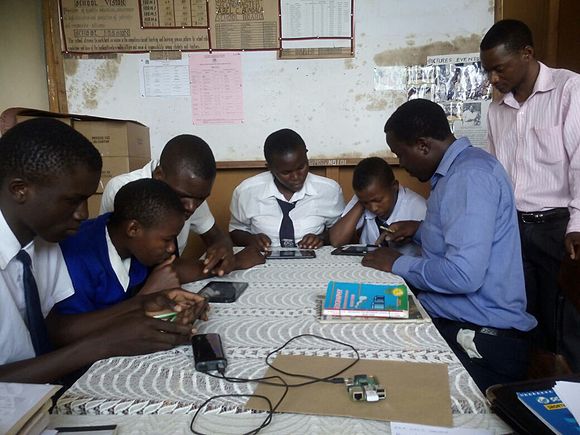
Masekelo secondary school in Tanzania doesn’t have many resources. The children have to collect water for the school every day and there are often not enough desks and chairs to go around. The Tanzanian government has decreed that every school should have a science lab, but yet has provided no funds for it – everything is supposed to come from donations from parents or other sources. Considering the parents of the children at this school tend to be subsistence farmers, this has proved to be something of a challenge!
Janet Chapman from Wikimedia visited the school last September and spoke to the headmaster about the issues and donated a Raspberry Pi filled with pre-loaded content from the RACHEL project (which includes Wikipedia for Schools, 2,000 maths and science videos from Khan Academy, and 800 classic books and various health resources). The Pi (which is battery-powered) runs a wifi hotspot so that the content can then be accessed from available tablets and phones which the school already has.
You can read more in Janet’s report on Wikimedia. You can also follow the progress of the Masekelo project on the school’s Facebook page.



